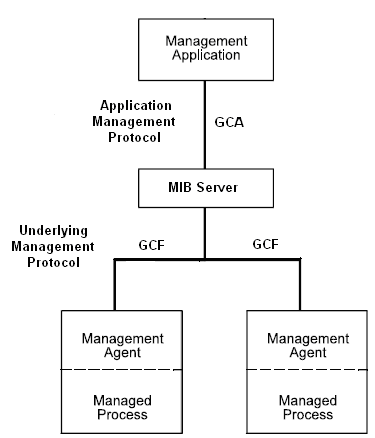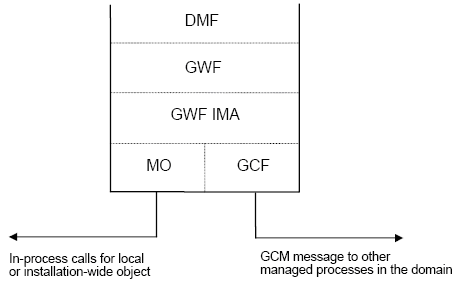This chapter describes the features of the Ingres Management Architecture (IMA), restrictions, and examples of how to use it.
IMA provides the means for developers and third-party vendors to create applications to manage and monitor Ingres installations.
These capabilities are of interest to:
The user of IMA must be familiar with SQL-based tools such as OpenROAD, Ingres Terminal Monitor, Visual Basic, or ODBC and have an overall understanding of Ingres and of Ingres system monitoring and performance.
IMA provides an SQL based interface to a set of user registered tables accessing management information to allow the monitoring and managing of an Ingres installation.
Data that IMA exposes for monitoring includes data currently reported through Ingres utilities such as:
Through IMA, system management applications can be created that allow management operations to be performed against Ingres servers. These operations include:
IMA based management tools can monitor and control the local environment or an Ingres remote installation reached through Ingres Net.
By combining IMA with Ingres Net, local and/or multiple remote Ingres installations can be managed and monitored from a single point.
The IMA architecture is represented in the following diagram:

The user interfaces with an SQL based Management Application program, for example, OpenROAD.
The Management Application interfaces with the MIB Server across the Application Management Protocol. Ingres has its own communications protocol which uses the GCA (General Communications Architecture).
GCA is the communications interface used by clients, servers, and distributed data managers to access GCF services that passed tuples, queries, and commands between Ingres processes. Through this mechanism, the Management Application receives MIB data from the MIB Server.
In the current IMA architecture, a MIB Server is a DBMS server.
The GCA allows the Management Application to either connect directly to a MIB Server or indirectly to a remote MIB Server using a GCC process.
The IMA components in the MIB Server are as follows:

Component |
Description |
|---|---|
DMF |
Data Management Facility |
GWF |
Gateway (Enterprise Access) Facility |
IMA GWF |
IMA Gateway Facility |
MO |
Managed Object module for handling local DBMS IMA objects |
GCF |
General Communication Facility for communicating with other Ingres processes |
GCM |
General Communication Mechanism for communicating with other Ingres processes |
The MIB Server uses IMA GWF, a non-relational gateway to present the IMA objects as relational database tables.
Without a MIB Server, IMA data is not available to ordinary users.
For objects internal to the DBMS Server, the MIB Server reads and writes objects directly through MO. Objects in other processes, for example a communication server, are handled using the GCF message protocol.
A Managed Process only needs to talk a single protocol, while MIB servers can support Management Applications using a variety of protocols.
IMA has been designed to be compatible with other management protocols, for example: